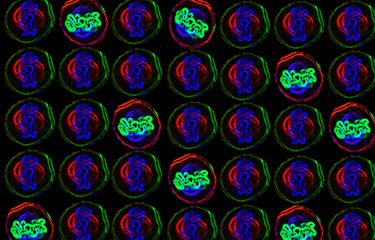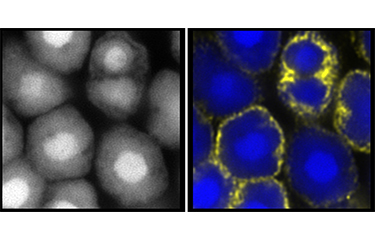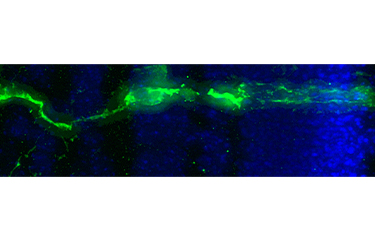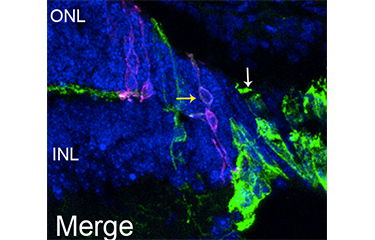
-
Careers • News • Contact us •
- Login
- Français
Creating new
knowledge
Exploring new avenues to develop tomorrow’s medical knowledge through an approach that integrates basic and clinical research
Our research units are led by principal investigators who collaborate in a spirit of collegiality and with the vision of bridging the gap between research and patients. They train the next generation of scientists and are independent and creative minds who work tirelessly to improve health.
Current research
"Our work aims to provide a detailed understanding of the fundamental principles underlying the production of cell diversity in the developing nervous system, and to use this knowledge to design safer and more efficient cell therapies for neurodegenerative diseases."
Michel Cayouette, research director
Cellular Neurobiology
In various neurodegenerative diseases, neuronal loss leads to irreversible functional deficits, such as cognitive, motor, and perception defects. In the retina, the progressive loss of light-sensing photoreceptors can lead to blindness. Stem cell-based therapies are generating excitement for the treatment of incurable retinal degenerative diseases, but despite recent advances, cell replacement therapies still face major challenges. Photoreceptor cells are highly specialized neurons and generating them in culture from stem cells remains inefficient, especially for cone photoreceptors, which are essential for daylight vision. Our working hypothesis to explain this limited success is that current protocols do not take into consideration the intrinsic identity of stem cell-derived progenitors. As in normal retinal development, we believe that stem cell-derived retinal progenitors have an intrinsic temporal identity that restricts their competence to generate specific populations of cell types produced during a given time window. Cone photoreceptors, for example, are produced at early stages of retinal development, whereas rod photoreceptors are produced late. Understanding how progenitors change over time to switch from cone-producing phase to a rod-producing phase is essential towards improving cell replacement protocols. Similarly, understanding how stem cells chose to give rise to a specific retinal cell type instead of another has important consequences for developing better and more efficient cell replacement therapies. With this in mind, our group focuses on trying to understand how various retinal cell types are produced during normal development, with the ultimate goal of using the acquired knowledge to design novel cell replacement therapy approaches. In the same way that a mechanic needs to have detailed understanding of how a car engine is built to fix it, we believe that a deeper understanding of the mechanisms guiding normal nervous system development is necessary to rebuild lost parts in disease.
| Team |
|
| Affiliations |
Other affiliations
|
| Degrees and experience |
|
Ongoing Projects
Mechanisms of asymmetric cell division
The ability of stem cells to generate two daughter cells of different types is essential for the production of cell diversity and tissue function. When cellular and molecular mechanisms governing this process, called asymmetric cell division, are altered, various developmental malformations or diseases can arise. In order to better understand the contribution of asymmetric cell divisions in the development of pathologies, we are studying the fundamental mechanisms that precisely regulate the production of asymmetric divisions. More specifically, we are working to understand how stem cells orient their mitotic spindle so as to unevenly distribute certain proteins or mRNAs in daughter cells in order to influence their fate differently.
Direct neuronal reprogramming
The use of stem cells to regenerate various tissues following degenerative diseases or injury has gained a lot of attention in recent years. As stem cells are multipotent, they can be differentiated into any cell type of interest, which can then be grafted to reconstitute a given cell population. However, this approach is facing different challenges, especially in the nervous system, where the efficiency of transplantation and the level of integration of transplanted cells into neural circuits is low. To get around this problem, we are working to identify approaches to directly reprogram glial cells of nervous tissue into neurons. We have developed a method that allows us to screen a large number of parameters to identify the conditions for converting glial cells into neurons in situ. This approach avoids complex cell transplantation surgeries and takes advantage of the presence of glial cells already integrated into the nervous system to replace neurons lost in various neurodegenerative diseases.
Control of cell polarity
The functional organization of different tissues depends on the ability of the cells that constitute them to precisely localize molecules or organelles asymmetrically. Cells then use this information to orient themselves in space and control various physiological functions. Some projects in our laboratory aim to better understand the molecular mechanisms governing the production of cell polarity and its role in the development and function of nervous tissues, in particular the retina.
Temporal patterning in neural development
During development of the nervous system, neural stem cells produce different cell types at specific times. This temporal patterning is critical to the production of a functioning nervous system, guiding the formation of neural circuits that control our movements, perception, learning and emotions. The production of cells at the wrong time of development can have serious consequences such as malformation of the neural tube (spina bifida), cognitive delays, and perception problems. Some of our work therefore aims to identify the molecular mechanisms allowing the production of the right cell type at the right time. More specifically, we use genomic approaches to identify the genetic networks involved in these decisions, with particular emphasis in identifying transcription factors that allow neural stem cells to change their temporal identity as development proceeds.
Genetic and molecular bases of retinal degenerative diseases
Inherited retinal degenerations cause the death of photoreceptors, the highly specialized cells in the retina that convert light into nervous signals. These diseases remain incurable and can lead to blindness. Thus, the identification of genetic mutations causing retinal degeneration is essential for the development of therapeutic approaches such as gene therapy. Identifying the disease-causing mutations is an important first step, but how these mutations precisely lead to photoreceptor cell death is often not understood, hampering therapeutic development efforts. To overcome this problem, we are collaborating with clinical geneticists who identify genetic mutations associated with retinal degenerations and model the disease in mice to elucidate how the mutations affect photoreceptor survival.
Protein homeostasis and neuroprotection
Several neurodegenerative diseases are caused by the accumulation of toxic proteins in neurons. These findings suggest that understanding how these proteins accumulate in cells could help design ways to lower their levels, which could have a beneficial effect on disease progression. Some projects in the lab try to identify the cellular and molecular mechanisms controlling homeostasis of these disease-associated proteins and to use this knowledge to develop methods to reduce the levels of these proteins in diseased neurons.
Important Discoveries
|
2008 Ikaros confers early temporal competence to mouse retinal progenitor cells |
|
2016 SAPCD2 Controls Spindle Orientation and Asymmetric Divisions by Negatively Regulating the Gαi-LGN-NuMA Ternary Complex |
|
2018 Casz1 controls higher-order nuclear organization in rod photoreceptors |
|
2010 Computational prediction of neural progenitor cell fates |
|
2015 A conserved regulatory logic controls temporal identity in mouse neural progenitors |
|
2015 Mutations in PNPLA6 are linked to photoreceptor degeneration and various forms of childhood blindness |
|
2013 A molecular blueprint at the apical surface establishes planar asymmetry in cochlear hair cells |
|
2016 Msx1-Positive Progenitors in the Retinal Ciliary Margin Give Rise to Both Neural and Non-neural Progenies in Mammals |
Tools
| Press review |
|
| Grants |
|
| Recognitions and honors |
Join the
group Research
Available positions
Ongoing clinical studies
Research Partners






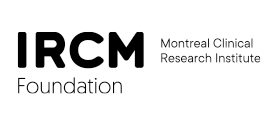

© Montreal Clinical Research Institute, Année.All rights reserves. | Privacy policy | Terms of use | Web site by Agence Riposte



